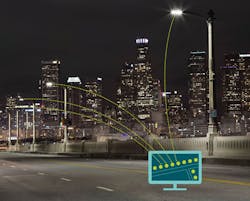Smart Cities Need Connectivity to Thrive
For industry services, the Internet of Things (IoT) brings efficient manufacturing. All processes, which are monitored and based off of collected data, are fine-tuned to achieve maximum productivity and efficiency.
For consumers, the Internet of Things brings connectivity. All of our devices are now connected in one way or another to cloud services or a general operation service. One example is Wi-Fi-connected smart refrigerators in the home that can order food for you when it sees you are running low on supplies. Other examples include your mobile device, which is connected to the public internet provided by your city, and your semi-autonomous car, which can provide drive assist not only by inputs to its sensors, but by also communicating with other cars. The next phase is for cities to connect to IoT.
Smart cities are residential IoT-connected infrastructures. The plan is that IoT will enhance all aspects of a city’s utilities. Water plants will regulate flow water based on high-usage periods throughout the day, or energy consumption will be controlled for the city based on usage. Both lead to better efficiency of resources.
Testing sites (see “CITE: World’s First “Ghost Town” for Testing New Technologies”) have already started to appear in the United States and in other parts of the world. Moreover, aspects of free modern utilities like public Wi-Fi (see “Pay-Phone Technology Innovations Hit the Big Apple”) are appearing in modern cities.
One of the next steps is toward smart cities is coming from mobile operator Vodafone and Philips Lighting. They are introducing the concept CityTouch. Philips is using Vodafone’s SIM card network to establish its machine-to-machine network into a LED streetlight management system. This has the potential to reduce energy usage by 70%. Every streetlight will have a M2M SIM that communicates back to the CityTouch system.
Bill Bien, head of strategy and marketing for Philips Lighting, says that the network “…link[s] streetlights with sensors, devices, and management systems… [and] take light beyond illumination, helping to make cities more energy efficient, safer, and ultimately more livable.” At the central hub, the lights will be regulated and programmed.
The LED lights help reduce electricity consumption. According to The Climate Group, global rollout of LEDs would reduce electricity consumption for lighting by 52%, thus reducing CO2 emissions by 730 million tonnes per year.
These are the next steps for smart cities. Beyond cloud backups and internet-connected devices, it is internet-connected services. Services like streetlights and electricity either work on a predefined schedule or on demand. The future of efficiency is when these services and programs are flexible and can adjust instantly to the current demand of the city. This way our resources are saved and the city is efficient.
Looking for parts? Go to SourceESB.

